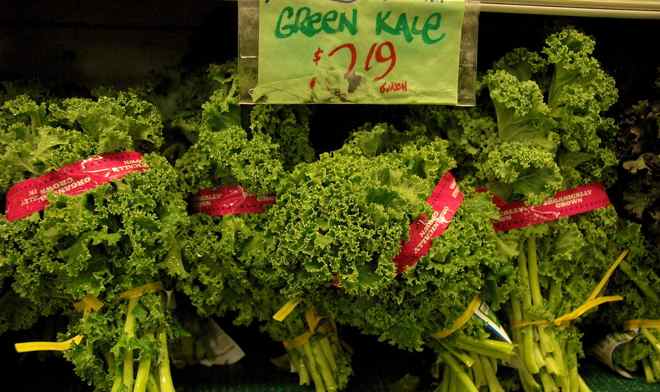According to the Natural Resources Defense Council (NRDC), the food choices that consumers make every day can have a big impact on the environment. For example, open-ocean seafood fishing produces an estimated 130 million tons of carbon dioxide each year. 27 percent of all food (by weight) produced in the United States is thrown away. Emissions from importing fruits and vegetables are estimated to equivalent to the annual emissions from 1.5 million cars. And synthetic pesticide use degrades air and water quality, while also threatening the health of workers, farmers, and communities. The good news is that even small changes in what consumers buy and eat can add up to real environmental benefits. NRDC’s Food Facts shares four ways to eat green in order to help save the environment.
1. Choose Climate-Friendly Food
Food that is high on the food chain (e.g. beef, pork, chicken, seafood) or arrives to your plate after extensive processing typically requires more energy and creates more pollution. One solution is to eat lower on the food chain by eating more fruits, vegetables, and grains, and limiting the intake of red meat. Another is to look for fresh foods with the fewest processing steps from farm to plate. Try consuming fresh foods instead of frozen whenever possible. And, for seafood lovers, choose locally caught, sustainably managed fish or herbivorous farmed stocks like tilapia, catfish, and carp. Seafood Watch provides plenty of information on sustainable seafood.
2. Buy Organic and Other Sustainable Certifications
Organic agriculture tends to be a safer choice for the environment and for eaters because organic growers do not use synthetic pesticides and fertilizers. Although the price tends to be higher, buy organic and other certified foods when possible. For more information on organic and other certified foods, check out Greener Choices.
3. Watch Your Waste
An estimated 27 percent of all food (by weight) produced for consumers in the United States is thrown away, and it is estimated that an average household wastes 14 percent of its food purchases. Nearly all of this food waste, not to mention the pollution caused by the pesticides, production, packaging, and transportation that goes into food products, ends up in landfills where it releases methane, a powerful greenhouse gas. There are easy solutions: purchasing foods that can be consumed before they expire, and composting food waste when possible.
4. Eat Locally
Not many consumers are aware of the source of their food. A typical American meal contains ingredients from five foreign countries. Buying local can help reduce the pollution and energy involved in transporting, storing, and refrigerating food that travels long distances. Choose local food options whenever possible, and avoid purchasing food, typically perishables, imported by airplane.















